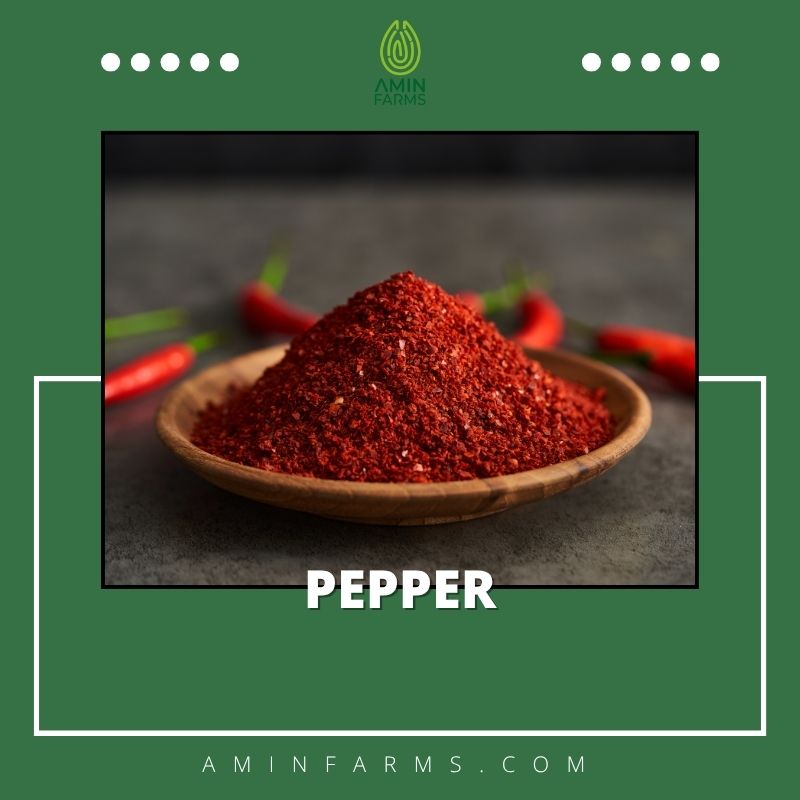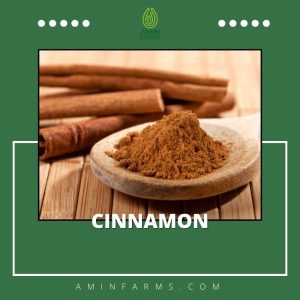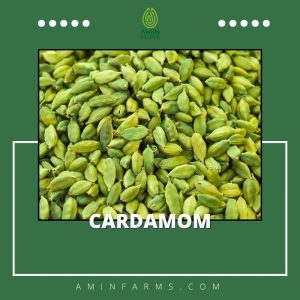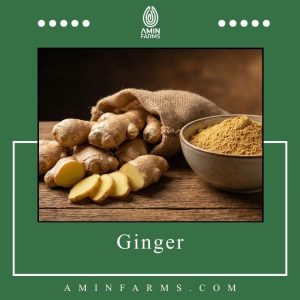The Pungent Punch of Pepper Spice
Pepper is one of the oldest and most widely used spices in the world, with its pungent taste and unique aroma that add character and warmth to any dish. The natural compounds in pepper create a sensation of heat and spiciness in the mouth, making it a staple in cooking around the world.
Among the different types of pepper, black pepper is the most common and widely consumed. The spiciness of black pepper is due to the presence of a chemical called piperine, which is the main factor in its burning and spicy taste.
Black pepper is not only known as a popular spice for adding flavor to a variety of dishes—especially dishes containing meat, poultry, and fish—but also has many medicinal properties. In addition to adding a pleasant aroma and flavor, its small, black seeds help improve digestion, boost metabolism, and increase nutrient absorption.
Black, White, and Green Varieties
There are three main types of pepper: black, white, and green, all of which come from the same plant, Piper nigrum, or pepper plant. The difference between these types is not in the plant source but in the harvesting and processing method. This plant is a climbing shrub that produces berry-like fruits that, when dried and ground, come in black, white, and green varieties.
Black pepper is the most common and widely used type of pepper. This type is obtained by harvesting the plant’s green, unripe fruits, cooking them in hot water, and then drying them. During the drying process, the fruit’s skin shrinks and darkens, forming a black, wrinkled seed—the famous black pepper. Its taste is spicy and burning, and its aroma is intense and penetrating.
White pepper is obtained from the same fruits of the pepper plant, with the difference that the outer skin of the fruit is removed and only the inner seed is dried. This type of pepper has a milder flavor and a lighter color, and is often used in white sauces and dishes to preserve the appearance of the food.
Green peppers are harvested when the fruit is still unripe and fresh. These seeds are usually dried, frozen, or preserved in brine to preserve their natural color and flavor. Green peppers have a fresh, green, and less spicy flavor and are very popular in modern cooking and Asian cuisine.
Knowing the differences among these three types of peppers will help you choose the right spice for each dish and let you experiment with different flavors in your cooking.
Health Impacts of Pepper in Daily Diets
The spice plays an effective role in maintaining health by improving digestion, increasing metabolism, and reducing inflammation. This spice is a rich source of magnesium, vitamin K, iron, and fiber, and its essential oil is used in aromatherapy to reduce muscle pain, improve digestive problems, and relieve arthritis. Black pepper also has antibacterial and immune-boosting properties and can help reduce fever and inflammation. Its regular consumption helps improve mood and reduce boredom, increases energy levels, and eliminates the feeling of chronic fatigue. This spice prevents arterial blockages and supports heart health by lowering harmful cholesterol levels.
On the other hand, it is also effective in weight loss by increasing metabolism and helping to break down fats, which is why many add it to their herbal teas or diet meals. Black pepper acts as a natural painkiller and relieves joint pain by reducing inflammation associated with conditions such as arthritis. In the field of digestion, this spice helps improve digestion, reduce constipation, and prevent bloating by stimulating the secretion of stomach and intestinal enzymes. Its antioxidant compounds reduce the risk of cancers such as prostate, colon, and breast, and inhibit the growth of cancer cells. On the other hand, black pepper enhances memory and cognitive function by reducing free radicals and protecting brain cells. Another critical feature of pepper is its effect on nutrient absorption, especially compounds such as beta-carotene in carrots and curcumin in turmeric, which are better absorbed in the presence of pepper. Finally, regular consumption of pepper can regulate blood sugar levels and prevent diabetes. In this way, pepper is a small but powerful spice that, in addition to its pleasant taste, has significant effects on the body and mind.
Piperine for Better Absorption
Pepper contains an active compound called piperine, which not only gives it its spicy flavor but also has powerful antioxidant and anti-inflammatory properties. This substance protects the body from cellular damage and helps maintain overall health. Piperine plays an essential role in increasing nutrient absorption; it can enhance the absorption of vitamins, minerals, and even certain medications, so adding pepper to healthy foods can multiply their nutritional value. Also, the essential oil found in pepper is used in aromatherapy to reduce muscle pain, digestive problems, and joint inflammation. Research has shown that piperine, found in black pepper, also has a positive effect on brain health by improving cognitive function by inhibiting enzymes that break down neurotransmitters. In addition, piperine is an alkaline compound with anti-inflammatory properties that can be effective in treating skin diseases such as vitiligo and, by improving blood circulation, reduce joint pain caused by inflammation or poor blood flow. For this reason, pepper is not only a spice for flavoring food but also a therapeutic substance with many benefits for the body.
Pepper’s Role in Worldwide Cuisines
Pepper has an unparalleled and enduring role in global cuisine. From spicy, aromatic Asian dishes to European sauces, soups, and steaks, this spice is an undeniable main element of flavor and aroma. Each culture has a specific way of using pepper; sometimes to create spiciness, sometimes to balance flavors, and sometimes to eliminate stale or heavy smells in food. This diversity in use has made pepper a bridge between cultures and tastes. Black pepper also has a special place in Iranian cuisine and is used in almost all dishes, from traditional stews such as gheemeh, qorme-sabzi, and fesanjan to chicken dishes, fried fish, stews, and soups. It is also used in the preparation of sauces, pickles, pizza, Bandari sausage, falafel, and bean sprouts. Black pepper not only adds a pleasant flavor and heat to food, but also helps make every meal more delicious by eliminating stale odors and enhancing its natural aroma.
Harvesting and Grading Peppercorns
Pepper plays an indispensable and versatile role in global cuisine and has a special place in almost every culture and cooking style. From spicy, aromatic Asian dishes to European sauces and steaks, pepper is a key ingredient that adds flavor and aroma, transforming even the simplest dishes into a delicious, rich experience. In some cultures, pepper is used to increase spiciness and create a more exciting taste. In contrast, in others it is used to balance flavors, highlight the aroma of raw ingredients, or neutralize the unpleasant odor of meat and vegetables. The presence of pepper in street food, home cooking, and even luxury and restaurant cuisine indicates its flexibility and importance. In addition to flavor, black pepper can give food a fresh, pleasant feel by eliminating stale odors and enhancing its natural aroma. This spice has successfully bridged cultures and tastes, and its use in a variety of dishes—from soups and stews to sauces, fried foods, and even fast food—shows that pepper is not only a flavor enhancer but also a factor in harmony and balance in global cuisine.
2025 Market Dynamics for Pepper
The global pepper market will face a series of economic changes and opportunities in 2025. The main influencing factors include:
- Global demand: Increasing consumption of pepper in the food, pharmaceutical, and nutritional supplement industries, especially in developing countries, is stimulating demand growth.
- Price and economic fluctuations: Pepper prices are affected by climate change, harvest levels, and global transportation costs.
- Production and geographical regions: Climate change in producing countries such as Vietnam, Indonesia, and Brazil may affect pepper production and quality.
- Export opportunities: Given the growth of international markets and the increasing interest of consumers in natural and high-quality spices, export opportunities for pepper producers have increased.
- Innovation and packaging: The use of resistant packaging and modern processing techniques can increase the added value of the product and increase market share.
This analysis helps manufacturers, exporters, and even major buyers enter the market with better visibility and make smarter business decisions.
Pro Tips for Selecting Premium Pepper
To choose quality pepper, you should pay attention to a few key points: the color, smell, and size of the seeds are the most critical indicators. Fresh pepper should have a strong, natural smell, and its seeds should be heavy, shiny, and healthy. It is best to buy pepper from reputable producers to ensure its authenticity. Proper storage also plays a vital role in preserving pepper’s aroma and flavor; using sealed containers away from light and moisture extends the shelf life and quality of the spice. Black pepper is available in both powder and whole seeds, with whole seeds being preferred because they are less likely to be adulterated or have reduced quality. When buying whole pepper seeds, please pay attention to their small size, light weight, and lack of blemishes to achieve the best flavor and aroma in your dishes.









Reviews
There are no reviews yet.